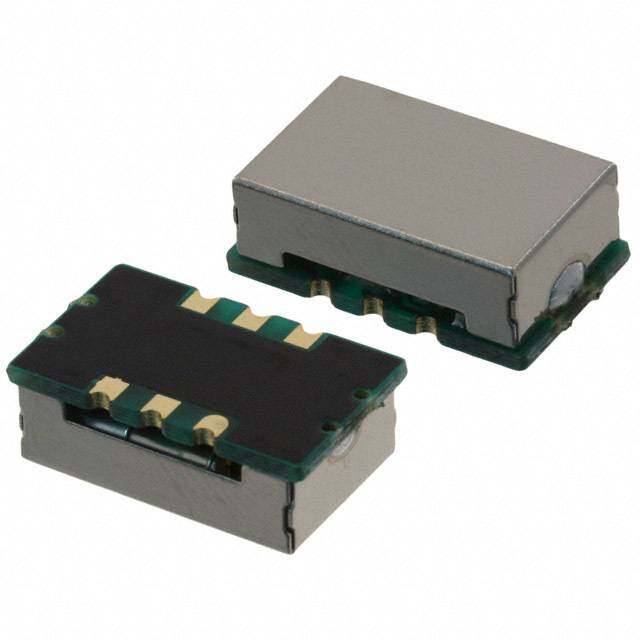ICGOO在线商城 > TURBO-DECO-E2-U3
- 型号: TURBO-DECO-E2-U3
- 制造商: Lattice
- 库位|库存: xxxx|xxxx
- 要求:
| 数量阶梯 | 香港交货 | 国内含税 |
| +xxxx | $xxxx | ¥xxxx |
查看当月历史价格
查看今年历史价格
TURBO-DECO-E2-U3产品简介:
ICGOO电子元器件商城为您提供TURBO-DECO-E2-U3由Lattice设计生产,在icgoo商城现货销售,并且可以通过原厂、代理商等渠道进行代购。 提供TURBO-DECO-E2-U3价格参考以及LatticeTURBO-DECO-E2-U3封装/规格参数等产品信息。 你可以下载TURBO-DECO-E2-U3参考资料、Datasheet数据手册功能说明书, 资料中有TURBO-DECO-E2-U3详细功能的应用电路图电压和使用方法及教程。
| 参数 | 数值 |
| 产品目录 | 编程器,开发系统嵌入式解决方案 |
| 描述 | IP CORE TURBO DECODER EC/ECP开发软件 Turbo Decoder |
| 产品分类 | 软件工程工具 |
| 品牌 | Lattice |
| 产品手册 | |
| 产品图片 | |
| 产品系列 | 开发软件,Lattice TURBO-DECO-E2-U3ispLeverCORE™ |
| 数据手册 | |
| 产品型号 | TURBO-DECO-E2-U3 |
| rohs | 无铅 / 符合限制有害物质指令(RoHS)规范要求 |
| 产品 | Development Software Support |
| 产品种类 | 开发软件 |
| 其它名称 | TURBODECOE2U3 |
| 商标 | Lattice |
| 工厂包装数量 | 1 |
| 描述/功能 | Turbo Encoder |
| 标准包装 | 1 |
| 核心 | CPLD |
| 类型 | 许可证 |
| 系列 | TURBO-DECO-E2 |
| 配套使用产品/相关产品 | Lattice 可编程产品 |

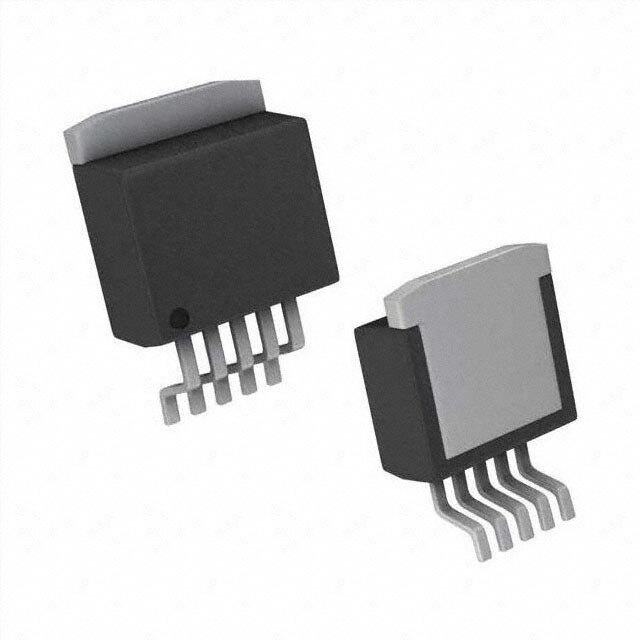

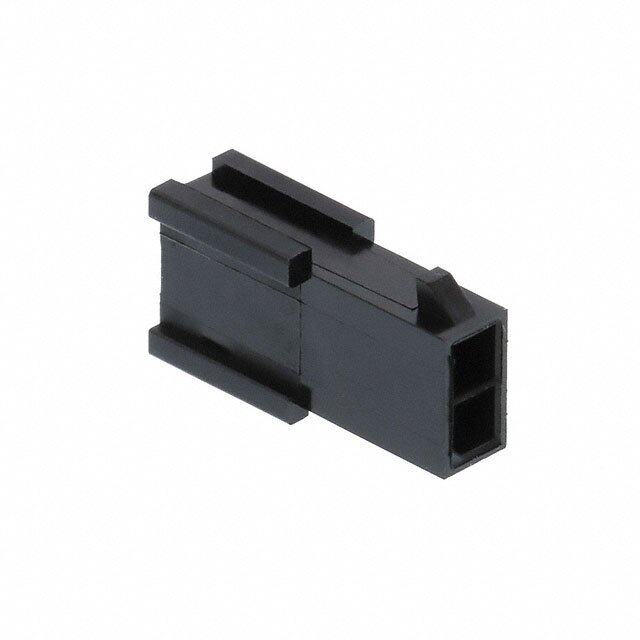
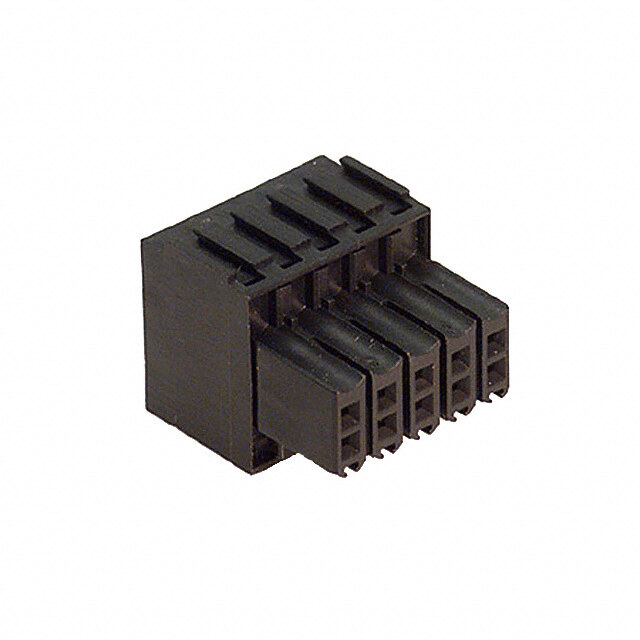



- 商务部:美国ITC正式对集成电路等产品启动337调查
- 曝三星4nm工艺存在良率问题 高通将骁龙8 Gen1或转产台积电
- 太阳诱电将投资9.5亿元在常州建新厂生产MLCC 预计2023年完工
- 英特尔发布欧洲新工厂建设计划 深化IDM 2.0 战略
- 台积电先进制程称霸业界 有大客户加持明年业绩稳了
- 达到5530亿美元!SIA预计今年全球半导体销售额将创下新高
- 英特尔拟将自动驾驶子公司Mobileye上市 估值或超500亿美元
- 三星加码芯片和SET,合并消费电子和移动部门,撤换高东真等 CEO
- 三星电子宣布重大人事变动 还合并消费电子和移动部门
- 海关总署:前11个月进口集成电路产品价值2.52万亿元 增长14.8%

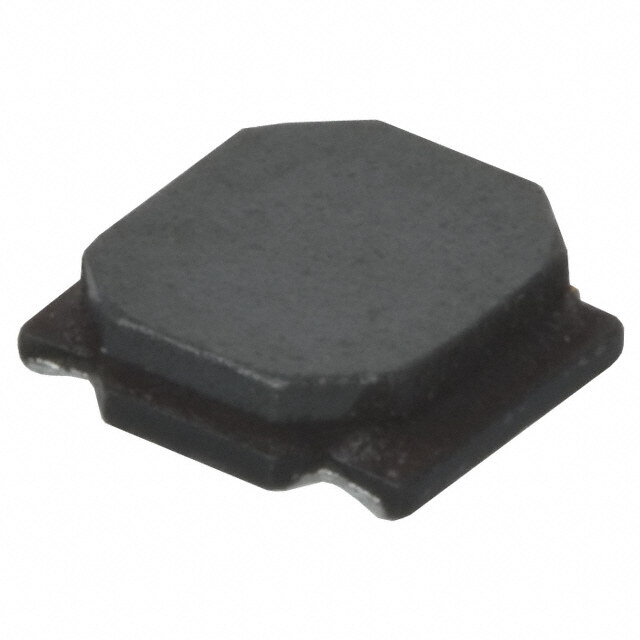

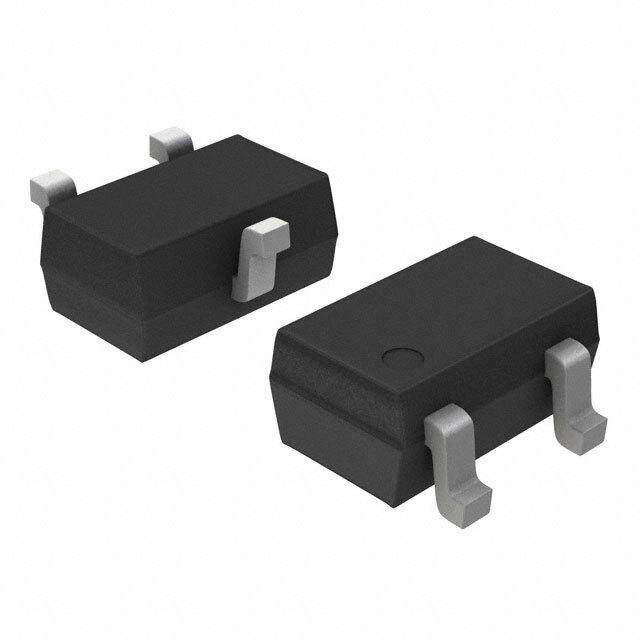
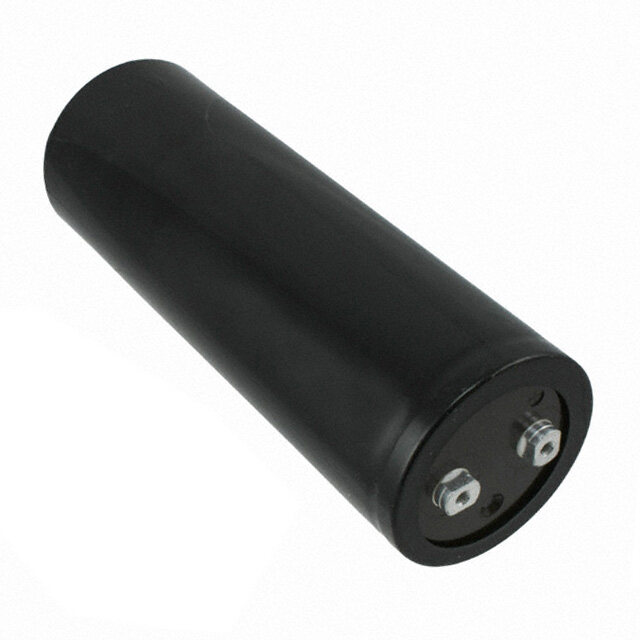
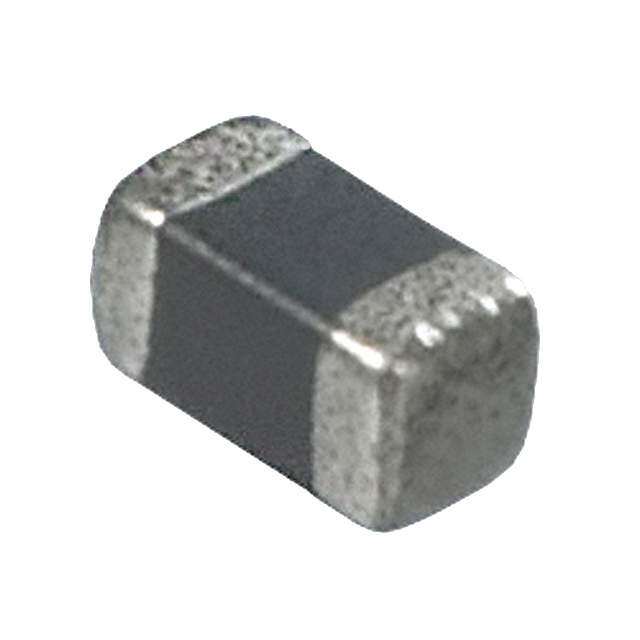
PDF Datasheet 数据手册内容提取
ispLeverTM CCOORREE Turbo Decoder User’s Guide November 2008 ipug14_04.4
Lattice Semiconductor Turbo Decoder User’s Guide Introduction Lattice’s Turbo Decoder core provides an ideal solution that meets the needs of turbo decoding applications. The core provides a customizable solution allowing turbo decoding of data in many system designs. This core allows designers to focus on the application rather than the Turbo Decoder, resulting in a faster time to market. Turbo coding is an advanced error correction technique widely used in the communications industry. The Turbo Decoder IP Core from Lattice is compliant with three different standards: 3GPP, 3GPP2 and CCSDS. Lattice’s Turbo Decoder core was developed in conjunction with Lattice’s Turbo Encoder core to provide a complete solution. This User’s Guide explains the functionality of the Turbo Decoder core and how it can be implemented to provide decoding. The Turbo Decoder core comes with the documentation and files listed below: • Lattice gate level netlist • RTL simulation model • Core instantiation template Features • Fully compatible with Third Generation Partnership Project (3GPP) standard: – 3GPP TS 25.212 version 4.2.0 • Fully compatible with CDMA2000/3GPP2 – 3GPP2 C.S002-C, May 2002 • Fully compatible with Consultative Committee for Space Data Systems standard: – CCSDS 101.0-B-5 • Throughput of 2Mbps for 3GPP at 30MHz, 7 iterations, 6-bit input symbol width • Two’s complement data/parity input • Depuncturing supported • Variable soft-widths for input symbols • User-defined number of states • Variable block sizes during runtime • Programmable number of iterations (1-15) • Optional hard decision storage • Selectable Max-Log-Map or Log-Map algorithm • Optional external memory with programmable pipeline stages • Optional double buffering • Bit Error Rate of 10-6 (at 1.5 dB Eb/No SNR) General Description Turbo coding is an advanced error correction technique widely used in the communications industry. Turbo encod- ers and decoders are key elements in today’s communication systems to achieve the best possible data reception with fewest possible errors. The basis of turbo coding is to introduce redundancy in the data to be transmitted through a channel. The redundant data helps to recover original data from the received data. In data transmission, turbo coding helps achieve near Shannon limit performance. 2
Lattice Semiconductor Turbo Decoder User’s Guide Lattice provides a Turbo Decoder IP core that is both flexible and compliant with three different standards: 3GPP, 3GPP2 and CCSDS. 3GPP is widely used in WCDMA and MC-CDMA applications while CCSDS is most com- monly found in telemetry and space communications. Figure 1 shows the top-level block diagram of this core. Lattice also supplies a Turbo Encoder core that provides a complete state-of-the-art error correction solution. Figure 1. Turbo Decoder I/O Block Diagram rstn sr din inpvalid dout rfi rfno rfo Turbo Decoder blocksizeset(ipcfgset) blocksize iterations clk rate Note: Additional I/O signals are required if either an external memory or double buffer is selected. Please refer to the Additional Signals for External Memory section of this document for further information. MAP Algorithm Turbo decoding is based on the principle of comparing the probability of a received soft input data being a ‘1’ and ‘0’. The Lattice Turbo Decoder uses a decoding scheme called the MAP - Maximum Aposteriori Probability algo- rithm. The algorithm determines the probability of whether each received data symbol is a ‘1’ as well as ‘0’. This is done with the help of the data, parity symbols, and the decoder knowledge of the encoder trellis. A trellis is a form of a state transition table of the encoder input/output. Based on the data and parity information, the MAP decoder computes the probability of the encoder being in a particular state. Depending on the soft data, parity value and the weight from the previous state, the probability that the data is a ‘1’ or ‘0’ can be computed. The MAP decoder com- putes the weight for each data symbol in a given block for both the forward and reverse direction. This results in the computation of a forward and reverse metric. Using these two values, the probabilities are computed. After the probabilities are determined, they are compared and a decision is made. The Lattice Turbo Decoder IP core uses the logarithm of the probability to reduce computation; this is known as Log Likelihood ratio (LLR). The computation of the probabilities is done iteratively to obtain a reliable result. Once the result is considered reliable, one can make a final decision as to whether the data symbol is a ‘1’ or a ‘0’. The Lattice Turbo Decoder can implement both the Log-Map and Max-Log-Map algorithm. The Log-Map algorithm gives a slightly better performance than the Max-Log-Map but utilizes more resources and runs at a slower frequency. The Log Likelihood ratio is the probability that the received data bit is a ‘0’ divided by the probability that the received data bit is a ‘1’. P (D=0) L(D) = log P (D=1) The value of L(D) is positive if P(D=1) ≤ P(D=) and negative otherwise. The output data value is ‘1’ if L(D) is positive and ‘0’ if L(D) is negative. For one complete cycle of iteration, one needs to compute the LLR using parity for non- interleaved as well as interleaved data. 3
Lattice Semiconductor Turbo Decoder User’s Guide Block Diagram Figure 2 shows a block diagram of the Turbo Decoder detailing the key components and the data paths between these blocks. Figure 2. Turbo Decoder Functional Block Diagram HHaardrd Data/Parity Data dout din Memory MMapap write address LLLLRR write address DDeeccisiisoinon Memory Parity Decoder Buffer Storage Decoder write enable Buffer write enable (oSpttoiornaagl)e (optional) write address read address Control Interleaver write enable Functional Description The Turbo Decoder consists of four main components: control module, decoder, interleaver and memory buffers. Control Module The control module takes care of the interface, pipelining and handshake communication between various blocks and I/O pins. Data and parity are read serially into the memory and it is assumed that the data is received in the same order as it was transmitted from the encoder. Signal blocksizeset(ipcfgset) initializes the blocksize by specifying the size of the block to be input to the decoder. Input data can be given only when rfi is asserted. Input data has to be qualified with inpvalid to be accepted by the core. Decoder and Interleaver Once the data is entered into the decoder, the decoder starts computing the LLR of each data symbol. The LLR is computed for the block sequence twice, once using the non-interleaved data and the corresponding parity and then using the interleaved data and the corresponding parity. One round of this computation is called an iteration. Each iteration is divided into two sections, an ODD window and an EVEN window. The LLR for systematic parity is com- puted during the ODD window and the LLR for interleaved data is computed during the EVEN window. When both ODD and EVEN window computations are done, one iteration is complete. The user can set the number of itera- tions for each block on the iterations pin. During the second half of the iteration, EVEN window, the LLR computed in the first half is improved upon by using previous computations. Every window makes use of LLR information computed in the previous window and tries to improve on the estimate of LLR. The interleaver is used in the second half of iteration to generate the interleaved address. This address is used to address the data and parity memory to read the interleaved data for the second half of the iteration. It is also used to address the LLR memory unit and get the previously computed LLR information. At the end of one iteration, the decoder has a set of LLR for each input data. The second iteration starts with again using the non-interleaved parity bits and data and the previously com- puted LLR to get a new estimate of the LLR for the data. Once the decoder completes the number of iterations required to be done, the LLR memory buffer has the final LLR values. The sign of the LLR values determines whether the data is a ‘1’ or a ‘0’. A positive sign means the data value is a ‘1’, otherwise it is a ‘0’. 4
Lattice Semiconductor Turbo Decoder User’s Guide Output Data Handshaking When the decoder is ready to output data, signal rfo is asserted high after the decoder has completed the speci- fied number of iterations. The user can then assert signal rfno to read the decoded data, which then allows data to be output on dout. A synchronous reset signal, sr is available to reinitialize the Turbo Decoder in the middle of a block processing. The current block being processed will be completely discarded during this reset. This can be done at any point of time during the operation Memory Buffer The memory buffering for this IP splits into four sections. These sections are described in detail below. Input Data/Parity Memory The Turbo Decoder core requires a large amount of memory to store the input data block. Since data memory requirements are large, an external memory is recommended so that on-chip memory can be used for other pur- poses. An external memory interface is provided in the IP. A single or double buffer memory mode may be selected depending on the available external memory at hand. Double buffer memory allows one block of data to be pro- cessed while another block is written and read. Double buffer memory delivers better performance than the single buffer selection by minimizing delay between the processing of each block. Internal Memory Some internal memory is required to implement the interleaver and other necessary functions of the Turbo Decoder. Lattice’s Turbo Decoder requires a small amount of memory for internal purposes. For example, the 3GPP configuration uses 4.6Kb spread over four memory blocks. LLR Memory After the Turbo Decoder completes the required number of iterations, the LLR memory buffer stores the final LLR values. The size of the LLR memory buffer is dependant on configuration and block size. Hard Decision Storage Memory The Turbo Decoder IP core offers optional hard decision storage. When LLR memory is used as an output buffer, the decoder cannot go onto process the next block of data until current LLR values of the previous block are com- pletely read out. This results in an extra processing delay of B cycles (B = blocksize). To minimize delay, output data after hard decision can be stored in separate memory to allow the decoder to operate on a new data block if memory can be spared. Operational Data Flow The following flow diagram describes the sequence for every block introduced into the Turbo Decoder core. 5
Lattice Semiconductor Turbo Decoder User’s Guide Figure 3. Turbo Decoder Data Flow Asynchronous reset initializes the core. Block size and number of iterations is specified. Data and parity values are placed on input bus din and are written to input buffer. MAP Decoder begins operating on the data block. Computation of LLR for each data symbol begins. After the iterations are computed, the results of final LLR values are available in LLR memory. The rfo pin is asserted so the user can read the hard decision using handshake signal. Hard decision is available on output pin dout. Figure 4 shows the loading of block size and iterations for the current input block with assertion of input signal blocksizeset(ipcfgset) after asynchronous reset rstn has been de-asserted. After the reset assertion, the Turbo Decoder asserts rfi to indicate that it can receive a data block. At the same time the decoder de-asserts rfo signal to show that there is no data available to give any hard decisions at the output. Figure 4. Initialization and Data Input to Decoder 6
Lattice Semiconductor Turbo Decoder User’s Guide Note: Signals are transferred on the rising edge. N is the block size. Figure 5 shows the timing for data output. Once the Turbo Decoder has completed processing the data for a given number of iterations it is ready to output the hard decision data. The decoder indicates this by asserting signal rfo. Once the user detects this signal, rfno can be asserted to indicate that the output data can be received on the output port dout. Thus for every rfno asserted the decoder will output the hard decision on the output port dout. Once the decoder has output all data it will lower the rfo signal. Figure 5. Decoder Output When Processing is Done Note: Signals are transferred on the rising edge. N is the block size. Figure 6 illustrates how inpvalid can be used to control the flow of data into the decoder. The input data is received in conjunction with input signal inpvalid. When inpvalid is asserted the input data on port din is taken as valid data and written into the input data memory buffer. When the input port inpvalid is de-asserted, the Turbo Decoder core ignores the value on din. Figure 6. Input Data Handshaking with inpvalid Going Low Note: Signals are transferred on the rising edge. N is the block size. Figure 7 shows how rfno can be used to control the flow of data from the Turbo Decoder core. The output hand- shake signals are rfo and rfno. Once the decoder is ready to give out the hard decision data it asserts rfo. The receiving system will then assert the rfno signal when it is ready to receive the data. The decoder now puts the hard decision data value on the port dout. When the decoder has output the last data it lowers rfo to indicate that no more hard decision data is available in the decoder. 7
Lattice Semiconductor Turbo Decoder User’s Guide Figure 7. Output Handshake with rfno Signal Going Low Note: Signals are transferred on the rising edge. N is the block size. When the decoder is processing data it will lower rfi if it cannot receive another data block. This occurs in two dif- ferent scenarios. If only a single buffer has been chosen then the decoder will de-assert the rfi signal as soon as an input data block is read in completely. In case of double buffer memory the decoder will lower rfi when it has two blocks in memory and one of them is still being processed. Once the decoder completes processing the block, it will assert both rfo and rfi. As shown in Figure 8, the average processing delay for the Turbo Decoder in the case of 3GPP is 2.13xBxI, where B is the block size and I is the number of iterations. Figure 8. Decoder State During Data Processing Note: Signals are transferred on the rising edge. 8
Lattice Semiconductor Turbo Decoder User’s Guide Parameter Descriptions User-configurable parameters for each standard are shown in Table 1. Table 1. User-Configurable Parameters Parameter Name 3GPP 3GPP21 CCSDS Decoder type 3GPP 3GPP2 CCSDS Number of states 8 8 16 Maximum block size Default: 5114 Default: 20730 Default: 8920 Range: 3-6 Range: 3-6 Range: 3-6 Input data width Default: 6 Default: 6 Default: 6 Range: 16 or 32 Range: 16 or 32 Range: 16 or 32 Window size Default: 16 Default: 16 Default: 16 Range: Yes or No Range: Yes or No Range: Yes or No External memory Default: Yes Default: Yes Default: Yes Range: Yes or No Range: Yes or No Range: Yes or No Double buffer Default: Yes Default: Yes Default: Yes Max Log Map (Default) Max Log Map (Default) Max Log Map (Default) Decoder algorithm Log Map Log Map Log Map Range: 1-6 Range: 1-6 Range: 1-6 External memory pipeline Default: 1 Default: 1 Default: 1 Range: Yes or No Range: Yes or No Range: Yes or No Hard decision storage Default: Yes Default: Yes Default: Yes 1. 3GPP2 type is currently available only for LatticeEC™ and LatticeECP™ device families. 9
Lattice Semiconductor Turbo Decoder User’s Guide Signal Descriptions Table 2 shows the signal descriptions for the input and output ports of the Turbo Decoder IP core. Table 2. Turbo Decoder Signal Definitions Port Name I/O Type Width Signal Description clk Input 1 System Clock rstn Input 1 Active Low Asynchronous Reset sr Input 1 Synchronous Reset din Input 3-6 Data Input (soft encoded data from demodulator) dout Output 1 Data Output iterations Input 4 Input bus to set the number of decoding iterations. The valid values are from 1 to 15. blocksiz- Input 1 Interleaver initialization. blocksize on input pins can be changed and eset(ipcfgset) accepted when this signal is asserted. inpvalid Input 1 Enables the decoder to read the data at din when asserted. rfi Output 1 Active High signal. Indicates that decoder is available to accept data. This signal is de-asserted one data symbol before buffer is full. blocksize Input 13-15 Block size up to 20730 bits can be set depending on the configuration selected. Block size ranges: 3GPP: 40-5114 3GPP2: 378-20730 CCSDS: 1784, 3568, 7136, 8920 rfno Input 1 Asserted to indicate successful reading of encoded data from dout. rfo Output 1 When asserted encoded data is ready and available at dout. rate Input 1 or 2 Determines the rate of the Turbo Decoder For 3GPP, size 1 bit, 0-rate 1/3 and 1- rate 1/2 For 3GPP2, size 2 bits, 0-rate 1/2, 1- rate 1/3, 2- rate 1/4 and 3- rate 1/5 For CCSDS, size 2 bits, 0-rate 1/2, 1- rate 1/3, 2- rate 1/4 and 3- rate 1/6 10
Lattice Semiconductor Turbo Decoder User’s Guide Additional Signals for External Memory When external memory is used with this core additional signals are provided to form the interface to the external memory. These are detailed below. 3GPP In the case where external memory is selected, the I/O pins in Table 3 will be added to the block for exchanging data with the memory in the case of 3GPP. It is assumed that data and parity are stored in different memory buff- ers. Non-interleaved and interleaved parity are stored in different buffers. Table 3. Additional I/Os Due to External Memory for 3GPP Port Name I/O Type Width Signal Description g1_dat_buf1 Input 3-6 Information data port 1 g2_dat_buf1 Input 3-6 Information data port 2 g1_par_odd1 Input 3-6 Parity 1 (systematic) data port 1 g2_par_odd1 Input 3-6 Parity 1 (systematic) data port 2 g1_par_even1 Input 3-6 Parity 2 (interleaved) data port 1 g2_par_even1 Input 3-6 Parity 2 (interleaved) data port 2 data_to_mem Output 3-6 Information/parity data to memory data_waddr Output 3-6 Information/parity Write address wren_dat_buf1 Output 1 Write enable for Information data wren_par1_buf1 Output 1 Write enable for parity 1 (systematic) wren_par2_buf1 Output 1 Write enable for parity 2 (interleaved) g1_rden Output 1 Information/parity read enable port 1 g2_rden Output 1 Information/parity read enable port 2 g1_dat_raddr Output 11-15 Information read address port 1 g2_dat_raddr Output 11-15 Information read address port 2 g1_par_raddr Output 11-15 Parity read address port 1 g2_par_raddr Output 11-15 Parity read address port 2 In the case where double buffering is selected along with the external memory the I/O pins in Table 4 will also be added to the core for exchanging data with the second buffer in the case of 3GPP. Table 4. Additional I/Os Due to Double Buffering for 3GPP Port Name I/O Type Width Signal Description g1_dat_buf2 Input 3-6 Information data port 1 g2_dat_buf2 Input 3-6 Information data port 2 g1_par_odd2 Input 3-6 Parity 1 (systematic) data port 1 g2_par_odd2 Input 3-6 Parity 1 (systematic) data port 2 g1_par_even2 Input 3-6 Parity 2 (interleaved) data port 1 g2_par_even2 Input 3-6 Parity 2 (interleaved) data port 2 wren_dat_buf2 Output 1 Write enable for Information data wren_par1_buf2 Output 1 Write enable for parity 1 (systematic) wren_par2_buf2 Output 1 Write enable for parity 2 (interleaved) 11
Lattice Semiconductor Turbo Decoder User’s Guide CCSDS For CCSDS decoder type, in the case that an external memory is selected; the following additional pins are required. It is assumed that data and parity are stored in different memory buffers. Non-interleaved and interleaved parity are stored in different buffers. Table 5. Additional I/Os Due to External Memory for CCSDS Port Name I/O Type Width Signal Description g1_par2_odd1 Input 3-6 Parity 3 (systematic) data port 1 g2_par2_odd1 Input 3-6 Parity 3 (systematic) data port 2 g1_par3_odd1 Input 3-6 Parity 4 (systematic) data port 1 g2_par3_odd1 Input 3-6 Parity 4 (systematic) data port 2 g1_par3_even1 Input 3-6 Parity 5 (interleaved) data port 1 g2_par3_even1 Input 3-6 Parity 5 (interleaved) data port 2 wren_par3_buf1 Output 1 Write enable for parity 3 (systematic) wren_par4_buf1 Output 1 Write enable for parity 4 (systematic) wren_par5_buf1 Output 1 Write enable for parity 5 (interleaved) Note: These ports are in addition to the ports listed for 3GPP in Table 3. In the case where double buffer is selected along with the external memory the I/O pins in Table 6 will also be added to the core for exchanging data with the second buffer in the case of CCSDS. Table 6. Additional I/Os Due to Double Buffering for CCSDS Port Name I/O Type Width Signal Description g1_par2_odd2 Input 3-6 Parity 3 (systematic) data port 1 g2_par2_odd2 Input 3-6 Parity 3 (systematic) data port 2 g1_par3_odd2 Input 3-6 Parity 4 (systematic) data port 1 g2_par3_odd2 Input 3-6 Parity 4 (systematic) data port 2 g1_par3_even2 Input 3-6 Parity 5 (interleaved) data port 1 g2_par3_even2 Input 3-6 Parity 5 (interleaved) data port 2 wren_par3_buf2 Output 1 Write enable for parity 3 (systematic) wren_par4_buf2 Output 1 Write enable for parity 4 (systematic) wren_par5_buf2 Output 1 Write enable for parity 5 (interleaved) Note: These ports are in addition to the ports listed for 3GPP in Table 4. 12
Lattice Semiconductor Turbo Decoder User’s Guide 3GPP2 For the 3GPP2 decoder type, in the case that an external memory is selected; the following additional pins are required. It is assumed that data and parity are stored in different memory buffers. Non-interleaved and interleaved parity are stored in different buffers. Table 7. Additional I/Os Due to External Memory for 3GPP2 Port Name I/O Type Width Signal Description g1_par2_odd1 Input 3-6 Parity 3 (systematic) data port 1 g2_par2_odd1 Input 3-6 Parity 3 (systematic) data port 2 g1_par2_even1 Input 3-6 Parity 4 (interleaved) data port 1 g2_par2_even1 Input 3-6 Parity 4 (interleaved) data port 2 wren_par3_buf1 Output 1 Write enable for parity 3 (systematic) wren_par4_buf1 Output 1 Write enable for parity 4 (interleaved) Note: These ports are in addition to the ports listed for 3GPP in Table 3. In the case where a double buffer is selected along with the external memory, the I/O pins in Table 8 will also be added to the core for exchanging data with the second buffer in the case of 3GPP2. Table 8. Additional I/Os Due to Double Buffering for 3GPP2 Port Name I/O Type Width Signal Description g1_par2_odd2 Input 3-6 Parity 3 (systematic) data port 1 g2_par2_odd2 Input 3-6 Parity 3 (systematic) data port 2 g1_par2_even2 Input 3-6 Parity 4 (interleaved) data port 1 g2_par2_even2 Input 3-6 Parity 4 (interleaved) data port 2 wren_par3_buf2 Output 1 Write enable for parity 3 (systematic) wren_par4_buf2 Output 1 Write enable for parity 4 (interleaved) Note: These ports are in addition to the ports listed for 3GPP in Table 4. IPexpress™ User-Configurable Core The Turbo Decoder core is an IPexpress User-Configurable IP core, which allows designers to configure the IP and generate netlists as well as simulation files for use in designs. The IPexpress flow also supports a hardware evalu- ation capability, making it possible to create versions of the IP core that operate in hardware for a limited period of time without requiring the purchase of an IP license. To download a full evaluation version of this IP core, please go to the Lattice IP Server tab in the ispLEVER® IPex- press GUI window. All ispLeverCORE™ IP cores available for download are visible on this tab. References The Lattice Turbo Decoder IP core is compliant with two standards: 3GPP and CCSDS. More information about each standard can be referenced at the following locations. • The 3rd Generation Partnership Project (www.3gpp.org) provides specifications to 3GPP TS 25.212 v4.2.0 (2001-09) standards. • The Consultative Committee for Space Data Systems (www.ccsds.org) provides specifications to CCSDS 101.0- B-5 standards. 13
Lattice Semiconductor Turbo Decoder User’s Guide Technical Support Assistance Hotline: 1-800-LATTICE (North America) +1-503-268-8001 (Outside North America) e-mail: techsupport@latticesemi.com Internet: www.latticesemi.com Revision History Date Version Change Summary — — Previous Lattice releases. December 2006 04.1 Added IPexpress User-Configurable Core section. Updated LatticeECP/EC appendix. Added support for LatticeECP2, LatticeXP and LatticeSC. December 2006 04.2 Updated appendices. Added support for LatticeECP2M device family. July 2007 04.3 Updated to support LatticeXP2 devices with ispLEVER 7.0. November 2008 04.4 Updated signal names. Updated appendices. 14
Lattice Semiconductor Turbo Decoder User’s Guide Appendix for ORCA® Series 4 FPGAs Table 9. Performance and Utilization1 ORCA 4 f MAX Parameter File Mode Parameters PFUs LUTs Registers PIO EBR (MHz) turbo_deco_o4_1_001.lpc 3GPP See Table 1 1235 3750 3569 184 10 46 turbo_deco_o4_1_003.lpc CCSDS See Table 1 1708 3109 4859 269 16 36 1. Performance and utilization characteristics are generated targeting an OR4E06-2BA352 in ispLEVER 3.0 software. Ordering Part Number The Ordering Part Number (OPN) for all configurations of the Turbo Decoder core targeting ORCA Series 4 devices is TURBO-DECO-O4-N1. Table 1 lists the netlists that are available in Evaluation Package, which can be down- loaded from the Lattice web site at www.latticesemi.com. Use the IPexpress software tool to help generate new configurations of this IP core. IPexpress is the Lattice IP configuration utility, and is included as a standard feature of the ispLEVER design tools. Details regarding the usage of IPexpress can be found in the IPexpress and ispLEVER help system. For more information on the ispLEVER design tools, visit the Lattice web site at: www.lat- ticesemi.com/software. 15
Lattice Semiconductor Turbo Decoder User’s Guide Appendix for ispXPGA® FPGAs Table 10. Performance and Utilization1 ispXPGA f MAX Parameter File Mode Parameters PFUs LUTs Registers PIO EBR (MHz) turbo_deco_xp_1_001.lpc 3GPP See Table 1 2167 4586 3628 184 32 52 turbo_deco_xp_1_003.lpc CCSDS See Table 1 3486 5834 4966 269 49 46 1. Performance and utilization characteristics are generated targeting an LFX1200B-04FE680C in ispLEVER 3.x software. The evaluation version of this IP core only works on this specific device density, package, and speed grade Ordering Part Number The Ordering Part Number (OPN) for all configurations of the Turbo Decoder core targeting ispXPGA devices is TURBO-DECO-XP-N1. Table 1 lists the netlists available as Evaluation Packages for the ispXPGA device, which can be downloaded from the Lattice web site at www.latticesemi.com. Use the IPexpress software tool to help gen- erate new configurations of this IP core. IPexpress is the Lattice IP configuration utility, and is included as a stan- dard feature of the ispLEVER design tools. Details regarding the usage of IPexpress can be found in the IPexpress and ispLEVER help system. For more information on the ispLEVER design tools, visit the Lattice web site at: www.latticesemi.com/software. 16
Lattice Semiconductor Turbo Decoder User’s Guide Appendix for LatticeECP/EC FPGAs Table 11. Performance and Utilization1 IPexpress sysMEM™ f MAX User-Configurable Mode SLICEs LUTs Registers I/Os EBRs (MHz) 3GPP 2676 5230 2838 184 17 82 3GPP2 2834 5510 3020 249 49 84 CCSDS 4124 8093 4294 269 25 68 1. Performance and utilization characteristics are generated using LFECP33E-5F672C, with Lattice's ispLEVER v.7.1 SP1 software. When using this IP core in a different density, speed, or grade within the LatticeECP/EC family, performance and utilization may vary. Ordering Part Number The Ordering Part Number (OPN) for all configurations of the Turbo Decoder core targeting LatticeECP devices is TURBO-DECO-E2-U3. Table 1 lists the parameter settings that are available for the Turbo Decoder. Use the IPex- press software tool to help generate new configurations of this IP core. IPexpress is the Lattice IP configuration util- ity, and is included as a standard feature of the ispLEVER design tools. Details regarding the usage of IPexpress can be found in the IPexpress and ispLEVER help system. For more information on the ispLEVER design tools, visit the Lattice web site at: www.latticesemi.com/software. 17
Lattice Semiconductor Turbo Decoder User’s Guide Appendix for LatticeECP2™ FPGAs Table 12. Performance and Utilization1 IPexpress sysMEM™ f MAX User-Configurable Mode SLICEs LUTs Registers I/Os EBRs (MHz) 3GPP 2732 5365 2831 184 13 126 3GPP2 2801 5490 3015 249 27 124 CCSDS 4274 8433 4295 269 16 115 1. Performance and utilization characteristics are generated using LFE2-70E-7F672C, with Lattice's ispLEVER v.7.1 SP1 soft- ware. When using this IP core in a different density, speed, or grade within the LatticeECP2 family, performance and utiliza- tion may vary. Ordering Part Number The Ordering Part Number (OPN) for all configurations of the Turbo Decoder core targeting LatticeECP2 devices is TURBO-ENCO-P2-U3. Table 1 lists the parameter settings that are available for the Turbo Decoder. Use the IPex- press software tool to help generate new configurations of this IP core. IPexpress is the Lattice IP configuration util- ity, and is included as a standard feature of the ispLEVER design tools. Details regarding the usage of IPexpress can be found in the IPexpress and ispLEVER help system. For more information on the ispLEVER design tools, visit the Lattice web site at: www.latticesemi.com/software. 18
Lattice Semiconductor Turbo Decoder User’s Guide Appendix for LatticeECP2M™ FPGAs Table 13. Performance and Utilization1 IPexpress sysMEM™ f MAX User-Configurable Mode SLICEs LUTs Registers I/Os EBRs (MHz) 3GPP 2747 5403 3085 184 13 110 3GPP2 2712 5311 3312 249 27 111 CCSDS 4238 8350 4540 269 16 100 1. Performance and utilization characteristics are generated using LFE2M-35E-7F672C, with Lattice's ispLEVER 7.1 SP 1 software. When using this IP core in a different density, speed, or grade within the LatticeECP2M family, performance and utilization may vary. Ordering Part Number The Ordering Part Number (OPN) for all configurations of the Turbo Decoder core targeting LatticeECP2M devices is TURBO-DECO-PM-U3. Table 1 lists the parameter settings that are available for the Turbo Decoder. Use the IPexpress software tool to help generate new configurations of this IP core. IPexpress is the Lattice IP configuration utility, and is included as a standard feature of the ispLEVER design tools. Details regarding the usage of IPexpress can be found in the IPexpress and ispLEVER help system. For more information on the ispLEVER design tools, visit the Lattice web site at: www.latticesemi.com/software. 19
Lattice Semiconductor Turbo Decoder User’s Guide Appendix for LatticeXP™ FPGAs Table 14. Performance and Utilization1, 2 IPexpress sysMEM™ f MAX User-Configurable Mode SLICEs LUTs Registers I/Os EBRs (MHz) 3GPP 2744 5372 2838 184 17 76 CCSDS 4162 8268 4316 269 25 65 1. Performance and utilization characteristics are generated using LFXP20E-5F484C, with Lattice's ispLEVER v.7.1 SP1 soft- ware. When using this IP core in a different density, speed, or grade within the LatticeXP family, performance and utilization may vary. 2. Due to limited EBR availability, 3GPP2 is not supported in LatticeXP and not shown in this table. Ordering Part Number The Ordering Part Number (OPN) for all configurations of the Turbo Decoder core targeting LatticeXP devices is TURBO-DECO-XM-U3. Table 1 lists the parameter settings that are available for the Turbo Decoder. Use the IPex- press software tool to help generate new configurations of this IP core. IPexpress is the Lattice IP configuration util- ity, and is included as a standard feature of the ispLEVER design tools. Details regarding the usage of IPexpress can be found in the IPexpress and ispLEVER help system. For more information on the ispLEVER design tools, visit the Lattice web site at: www.latticesemi.com/software. 20
Lattice Semiconductor Turbo Decoder User’s Guide Appendix for LatticeXP2™ FPGAs Table 15. Performance and Utilization1, 2 IPexpress sysMEM™ f MAX User-Configurable Mode SLICEs LUTs Registers I/Os EBRs (MHz) 3GPP 2801 5490 3077 184 13 98 1. Performance and utilization characteristics are generated using LFXP2-17E-7F484C, with Lattice's ispLEVER v.7.1 SP1 software. When using this IP core in a different density, speed, or grade within the LatticeXP family, performance and utiliza- tion may vary. 2. Due to limited EBR availability, 3GPP2 and CCSDS are not supported in LatticeXP2 and are not shown in this table. Ordering Part Number The Ordering Part Number (OPN) for all configurations of the Turbo Decoder core targeting LatticeXP2 devices is TURBO-DECO-X2-U3. Table 1 lists the parameter settings that are available for the Turbo Decoder. Use the IPex- press software tool to help generate new configurations of this IP core. IPexpress is the Lattice IP configuration util- ity, and is included as a standard feature of the ispLEVER design tools. Details regarding the usage of IPexpress can be found in the IPexpress and ispLEVER help system. For more information on the ispLEVER design tools, visit the Lattice web site at: www.latticesemi.com/software. 21
Lattice Semiconductor Turbo Decoder User’s Guide Appendix for LatticeSC™ FPGAs Table 16. Performance and Utilization1 IPexpress sysMEM™ f MAX User-Configurable Mode SLICEs LUTs Registers I/Os EBRs (MHz) 3GPP 2766 5356 2827 184 13 172 3GPP2 2747 5334 3066 249 27 197 CCSDS 4008 7791 4326 269 16 174 1. Performance and utilization characteristics are generated using LFSC3GA25E-7F900C, with Lattice's ispLEVER 7.1 SP1 software. When using this IP core in a different density, speed, or grade within the LatticeSC family, performance and utiliza- tion may vary. Ordering Part Number The Ordering Part Number (OPN) for all configurations of the Turbo Decoder core targeting LatticeSC devices is TURBO-DECO-SC-U3. Table 1 lists the parameter settings that are available for the Turbo Decoder. Use the IPex- press software tool to help generate new configurations of this IP core. IPexpress is the Lattice IP configuration util- ity, and is included as a standard feature of the ispLEVER design tools. Details regarding the usage of IPexpress can be found in the IPexpress and ispLEVER help system. For more information on the ispLEVER design tools, visit the Lattice web site at: www.latticesemi.com/software. 22
Mouser Electronics Authorized Distributor Click to View Pricing, Inventory, Delivery & Lifecycle Information: L attice: TURBO-DECO-O4-N1 TURBO-DECO-XP-N1 TURBO-ENCO-O4-N1 TURBO-ENCO-XP-N1 TURBO-ENCO-E2-U3 TURBO-ENCO-P2-U3 TURBO-ENCO-SC-U3 TURBO-ENCO-XM-U3 TURBO-ENCO-X2-U3 TURBO-DECO-X2-U3 TURBO-DECO-E2-UT3 TURBO-DECO-P2-UT3 TURBO-DECO-PM-UT3 TURBO-DECO-SC-UT3 TURBO-DECO-X2- UT3 TURBO-DECO-XM-UT3 TURBO-ENCO-X2-UT3 TURBO-ENCO-PM-U3 TURBO-DECO-E2-U3 TURBO-DECO- P2-U3 TURBO-DECO-PM-U3 TURBO-DECO-SC-U3 TURBO-DECO-XM-U3
 Datasheet下载
Datasheet下载

